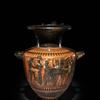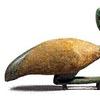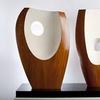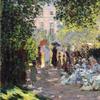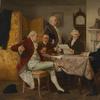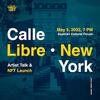Sneak Peek Inside the Frank Lloyd Wright House at Crystal Bridges
- BENTONVILLE, Arkansas
- /
- October 08, 2015
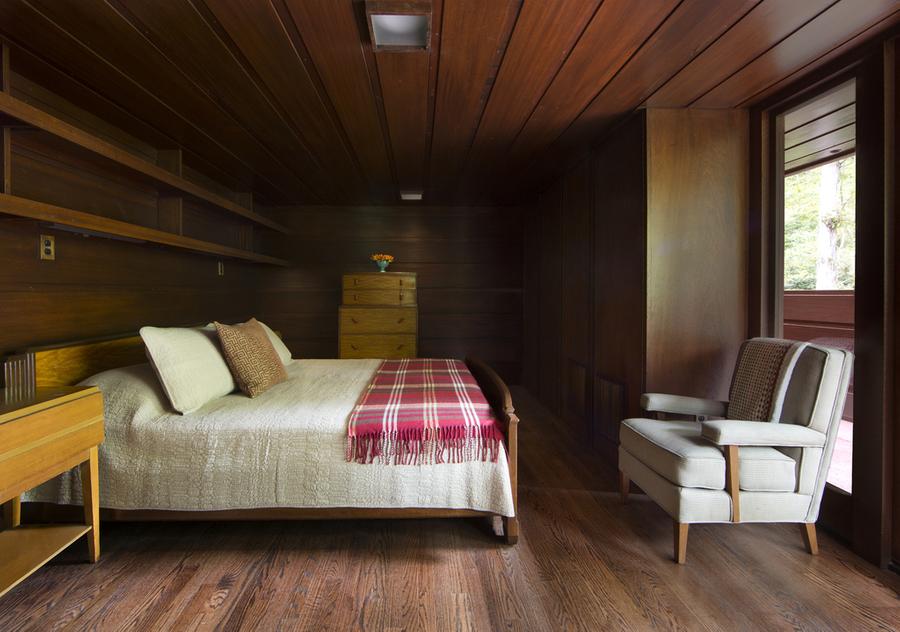
Photographs shown here from Crystal Bridges Museum of American Art offer a preview of Frank Lloyd Wright’s Bachman-Wilson House newly reconstructed on the museum grounds. Adjacent to the museum’s south entrance, the house will open to the public on November 11, 2015. Reservations are required and tickets will be available on November 2, at no cost. Preview tickets are now available to Crystal Bridges’ members. For more info, visit HERE.
Designed in 1954 for Gloria and Abraham Wilson, the house was originally built along the Millstone River in New Jersey. The house was subsequently purchased by architect/designer team Lawrence and Sharon Tarantino in 1988. Threatened by repeated flooding from the river, the Tarantinos determined that relocating the house was the best option for its preservation. After a multi-year search for a suitable location, Crystal Bridges acquired the house in 2013.
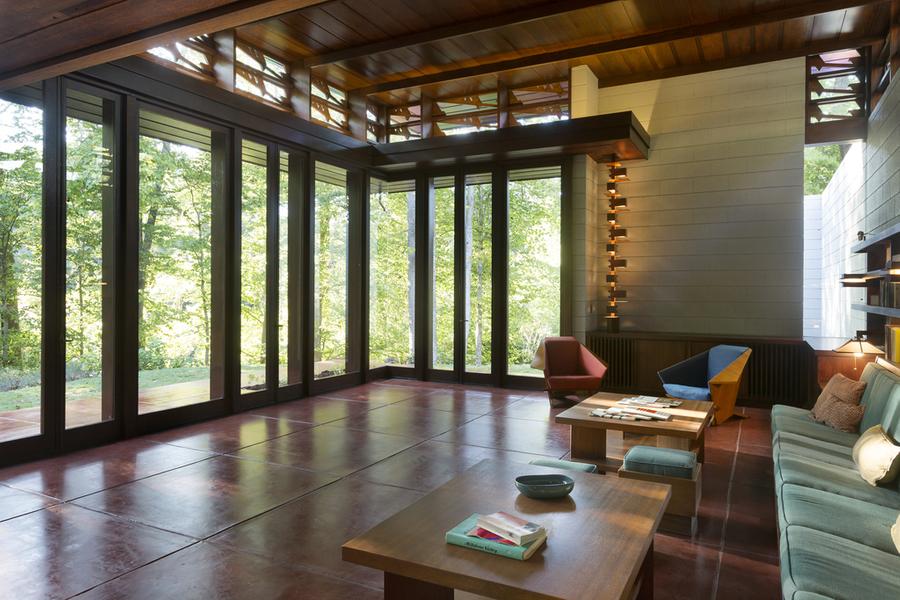
Crystal Bridges Executive Director Rod Bigelow said, “This was an opportunity to preserve an important example of American architecture and enhance our mission to connect visitors to art and nature. The house also deepens the rich architectural story in our region.”
Frank Lloyd Wright’s protégé was Arkansas native Fay Jones, who inspired Moshe Safdie’s design of Crystal Bridges. All three architects were awarded the American Institute of Architects’ Gold Medal—considered to be the profession’s highest honor. Both Wright and Jones challenged traditional ideas of building by connecting their structures to the typography of their environment, and these structures influenced Safdie to integrate Crystal Bridges into its natural surroundings.
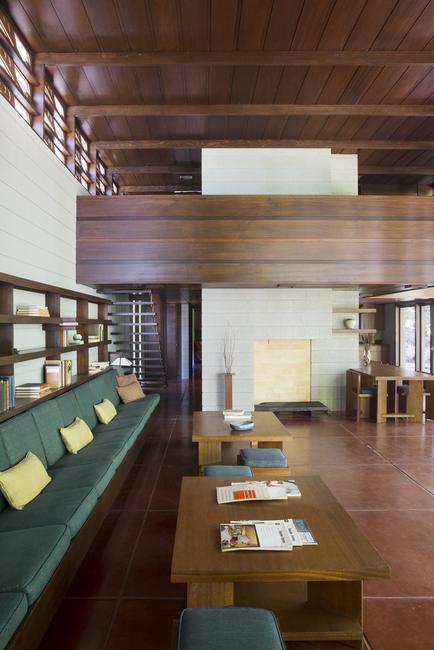
Bigelow adds, “This is not the end of the narrative. We hope that by providing viewing and educational opportunities to thousands of visitors every year, the house will inspire future generations of architecture students.”
The house was disassembled piece by piece and transported 1,200 miles, arriving to the museum in the spring of 2014 where site work was already underway. Reconstruction began in the fall of 2014, led by Scott Eccleston, Crystal Bridges’ Director of Operations, Ron Shelby, architect with Hight Jackson Associates, and Bill Faber with Bill Faber Construction.
Usonian Architecture
The word Usonian was derived from an abbreviation of “United States of North America.” Wright embraced this term as the name for a distinctly American and democratic style of architecture. He developed this style during the Great Depression and built approximately 120 Usonian homes.
“The goal for reconstruction was to create an authentic experience by integrating the house into the natural landscape so it feels like it has always been here. For visitors, whether they are Frank Lloyd Wright experts or architectural novices, we want them to be transported by the architecture,” said Crystal Bridges Chief Engagement Officer Niki Stewart. “We put great effort into upholding Frank Lloyd Wright’s design principles -- he believed in connecting physically and spiritually to the natural world through the use of horizontal lines that ground the structure into the landscape and dissolve the barrier between the interior and exterior.”
“I’d like to have a free architecture. I’d like to have architecture that belonged where you see it standing, and was a grace to the landscape instead of a disgrace.” - Frank Lloyd Wright
The approximately 1,700-square-foot house sits on a highly-elevated two acre site with building and design characteristics that include:
- Materials: Similar to Crystal Bridges, the house is primarily made from three basic materials: concrete, glass, and wood. Most of the mahogany wood and the glass are original to the Millstone site, while the concrete was recreated to Wright’s specifications.
- Landscape: The Museum’s goal was to remain true to Wright’s original site intentions of locating the house near a natural water source. The house overlooks Crystal Spring, the natural spring that flows into Crystal Bridges’ pond system, mimicking the house’s proximity to the Millstone River. The green, expansive lawn and 20 species of trees, shrubs, and perennials in the surrounding landscape nods to suburban intent and the simplicity of the 1950s.
- Flooring: Features include the 4 x 4 grid system that aligns from the floors all the way up the walls to the ceiling; the “Cherokee Red” concrete, as Wright referred to it, provides the architect’s signature aesthetic; while radiant heat floors show Wright’s innovative building techniques. Wright was a pioneer of radiant heating in the U.S.—this is a system of pipes in the flooring used to carry hot water that causes heat to rise consistently and provides efficient, comfortable warmth. .
- Compression and expansion: Wright used space and light to articulate the function of a room and to highlight focal points. In the Bachman-Wilson House, the bright, open living space draws visitors quickly through the tight entry hallway.
- Clerestory windows: Framed windows feature geometric patterns through which shadows and lights project on the living space throughout the course of the day. Perforations were inspired by the seed-pod designs from the Sycamore tree.
- Furniture and fixtures: Wright used built-in furniture in many of his designs. He felt that the furniture was as much a part of the architectural design as the roof or walls, and often dictated design and placement of pieces within a space. All of the built-ins are original to the house and most of the furniture was designed by Wright himself. For example, the Origami chairs and table lamp in the living room were designed by Wright for Taliesin.
Building Crystal Bridges
Along with the opening of the Frank Lloyd Wright house, a focused exhibition is located in the corridor that leads to the museum’s south lobby, giving visitors an opportunity to explore the stories behind the museum’s conception, design, and construction for the first time. Presented in six cases, Building Crystal Bridges tells the tale through texts, images, time-lapse photography, drawings, plans, architectural materials, and invitations to explore specific features of the buildings and grounds. Surprising connections are revealed between architects Moshe Safdie, Arkansas native Fay Jones, and Frank Lloyd Wright.
Frank Lloyd Wright House Hours:
Monday: 11 a.m. to 6 p.m.
Wednesday, Thursday, & Friday: 11 a.m. to 9 p.m.
Saturday & Sunday: 10 a.m. to 6 p.m.
Tuesday: Closed




